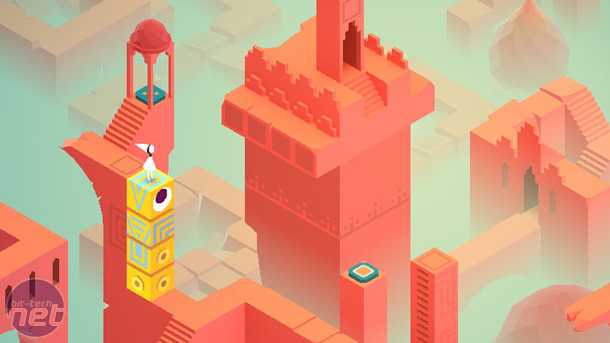Mobile games: doing it right
September 12, 2014 | 09:24
Companies: #ustwo #ustwo-wargaming #wargaming

Mobile games: doing it right
On a couple of occasions this year I’ve acted a little snobbishly toward mobile games, and I increasingly feel that this was unfair of me. Although mobile platforms are no doubt susceptible to some ethically dubious practices, such as shameless game cloning and the odd free-to-play travesty like Dungeon Keeper, the medium is really no more or less problematic than console gaming, PC gaming or gaming on any other platform. Its problems are merely different, and as the (relatively) new kid on the block, it’s had less time to work through them.Moreover, in the last couple of years the range of mobile gaming have expanded considerably, offering some unexpected delights that compete with the best home platform games in terms of their artistry and design, and even supporting a few games from genres which have been dismissed as unworkable on mobile due to control issues, hardware limitations and so forth.
This being the case, I decided to explore the potential in mobile gaming through a couple of very different games, speaking to the developers about their creation process, developing with mobile in mind, and the pitfalls that need to be avoided.
A standout example from recent months is Monument Valley – a puzzle game designed by
UsTwo. Charting the journey of the Silent Princess through a series of reality-bending puzzles, Monument Valley is in many ways a typical mobile game – minimalist but engaging. At the same time, it sports a level of artistry and quiet ingenuity that puts it above much of its competition.
“I've wanted to make a game about architecture for some time, but I always struggled to figure out what the gameplay would be,” says Ken Wong, lead designer on Monument Valley. “During this time I came across Ascending and Descending by M.C.Escher. It portrays a single building in isolation. I thought that this viewpoint emphasized the building rather than the characters. I thought that if you could guide a character from the bottom of the building to the highest point by manipulating architecture, that would be enough to be a satisfying game experience.”
The Escher inspiration is plain in each screen of Monument Valley. The player interacts with the game by manipulating platforms in physically impossible ways, an optical illusion brought about by the isometric perspective. So a platform leading horizontally across a building might, when flipped, become a staircase leading in the perpendicular direction up to the next floor.
“Inspiration for a puzzle could come from anywhere," says Wong. "Most of the time, when we invented a new mechanic or illusion, we had some notion about how we could create obstacles between the starting point and goal of the player. Often, we would intentionally suggest something to the player through the architecture or the flow of gameplay, and solving the puzzle would require them to rethink that. Other puzzles were more playful in nature, more about discovery and exploration.”
It’s a unique concept, but it's also one which become extremely challenging, not exactly ideal for playing on the bus. Because of the circumstances in which ustwo anticipated the game would be played, Wong wanted to balance the difficulty such that the puzzles never hindered the player’s progress for too long.
“The first half of the project was just about learning how to make good Monument Valley levels,” Wong explains. “If we observed people getting frustrated or stuck for too long at a particular point, we talked about how to fix it. If they got tired or confused, we would address that too. By testing early and regularly we would constantly refine our puzzles and get a better understanding of how people interacted with the game."
Other factors which ustwo needed to take into account included how mobile games are controlled. For Monument Valley, a touchpad was the ideal way for directly interacting with the game’s architecture, although it posed a few problems. “Touch control is more intimate. The player has a direct connection to the game world. It actually makes a big difference! But touch controls are very imprecise, you have to be very forgiving.”
Wong also cites the unpredictable nature of the environment mobile games are played in as a major consideration. “You can't depend on the player having the sound on, or headphones in.” The game is even designed to be played entirely in portrait, further showing how carefully it has been crafted for mobile.

MSI MPG Velox 100R Chassis Review
October 14 2021 | 15:04













Want to comment? Please log in.